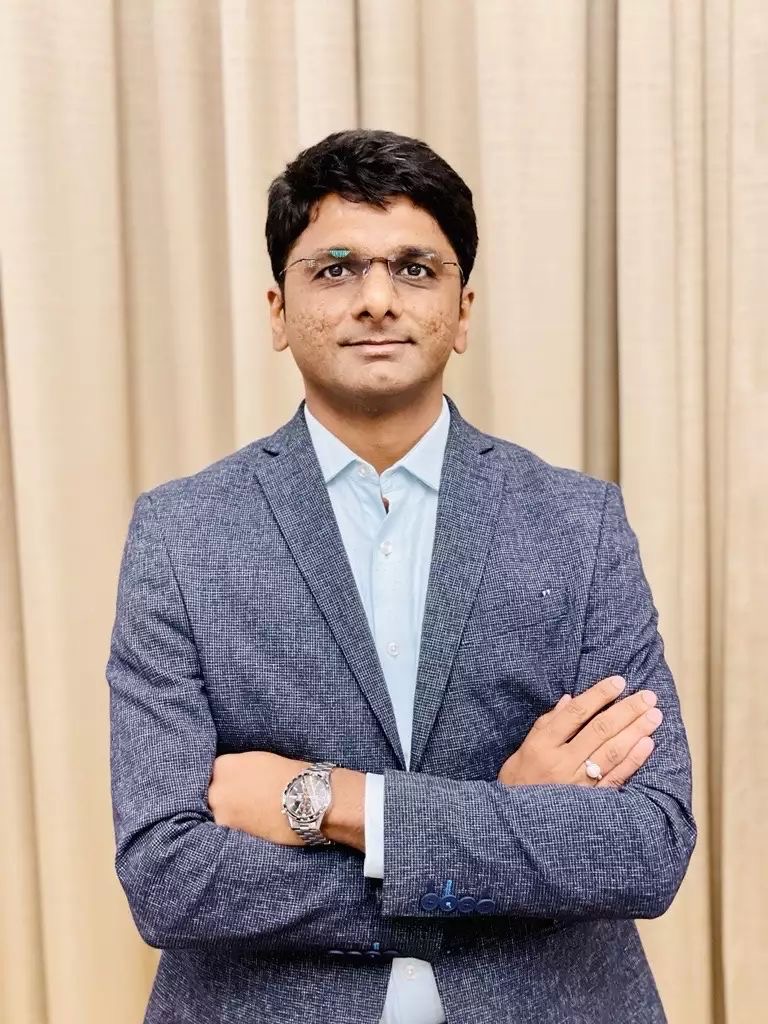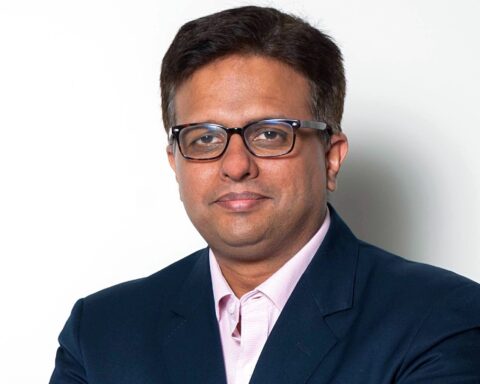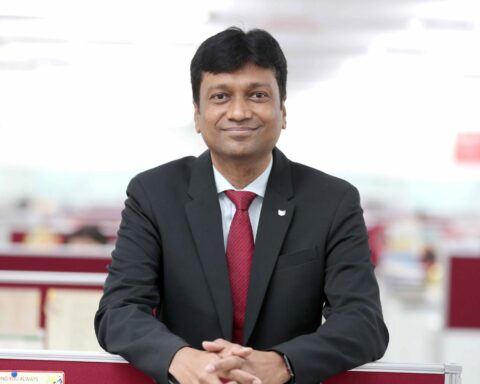Jahnavi– Can you explain about the transport surveillance and it’s working in detail?
Sandeep– Transport surveillance has two major aspects to itself. First is the surveillance of the transport system, where you have multiple surveillance systems working in tandem to ensure smooth operations of the system. This includes navigational systems for aircrafts, trains, or ships. In extreme weather or light conditions, conventional navigation’s effectiveness decreases and there are also higher chances of Human error, so we deploy Electro-Optical based navigation systems to allow better night vision or fog penetration. Transport systems have their own hubs, like Airports, ports, and railway stations, which need to be protected against unauthorized access and other threats. Perimeter Surveillance plays an important role in maintaining the integrity of such installations, products like our CatEye, which can be deployed in a clandestine manner can keep a constant vigil on the surroundings. CatEye is an IR based AI enabled system which notifies only against threats and does not give any false notifications. It has a very low power factor and as such is an extremely effective tool. Ideally a bunch of CatEye cameras work with a long range surveillance system mounted centrally to detect, recognize, and identify threats. The AI onboard does object classification, pattern analysis, and threat detection as well.
The second major aspect of Transport surveillance is people monitoring, where not only the activity of people is important, the condition also plays an important role as proved by the Covid phenomenon. In such a scenario, our crowd monitoring solution RelEye becomes very reliable. RelEye can scan multiple people at the same time and do a number of analytics on multiple people at the same time such as temperature measurement, facial recognition, mask/no-mask detection, and people counter etc. This compact product automates the entire process and notifies the user only if there is a threat/anomaly detected.
Jahnavi– What according to you is the future of Surveillance Systems which includes all the Trends and Innovations?
Sandeep– One of the most significant trends in the future of surveillance is the centralization of surveillance data. With the rise of big data analytics, surveillance data from various sources can be combined and analyzed in real-time to identify patterns and anomalies. This has led to the development of centralized surveillance systems that enable law enforcement agencies and other authorities to monitor vast amounts of data from a single location.
As surveillance data continues to grow in volume and complexity, there is a growing need for more efficient and effective ways to process and analyze it. One solution is the development of need-based algorithms that search only for the data that is required, thereby reducing the need for heavy infrastructure and computing power. By using these algorithms, surveillance systems can become more targeted and precise, and reduce the risk of false positives or unnecessary data collection. This not only makes surveillance more efficient and cost-effective, but it also helps to address privacy concerns by limiting the amount of data collected and stored.
Connected surveillance is another trend that is likely to shape the future of surveillance. This refers to the idea that surveillance would become a service, with multiple inputs for data available for hire and accessible across different clouds. For example, if someone needs to survey the area around them, they would be able to contact different providers who own data from CCTVs, analytics, traffic data, and other sources. This would allow for more comprehensive and integrated surveillance systems, with multiple stakeholders contributing to a shared pool of data.
With the proliferation of Internet of Things (IoT) devices and sensors in our environment, surveillance could become more ubiquitous and independent of specific devices. This means that data inputs for surveillance could come from a multitude of sources such as cameras, microphones, sensors, and even drones. Moreover, the data collected from these sources could be processed and analyzed in real-time by artificial intelligence (AI) systems, enabling more efficient and effective surveillance.
Jahnavi– What is the Significance of Security and Surveillance Technology in the Present Era?
Sandeep– As the famous American politician and statesman Benjamin Franklin once said, “By failing to prepare, you are preparing to fail.” This quote rings true when it comes to defence and homeland security, where preparedness and vigilance are essential to ensuring the safety of citizens and protecting national interests. In the present era, security and surveillance technology have become indispensable tools in the arsenal of defence and homeland security agencies worldwide. These technologies have revolutionized the way we approach security threats and have played a critical role in safeguarding nations against a wide range of external and internal threats.
Security and surveillance technology play a critical role in protecting critical infrastructure from external and internal threats. Apart from preventing crimes, security and surveillance technology is also significant in detecting potential threats. For instance, in airports, X-ray scanners and metal detectors are used to detect any dangerous objects that could be a threat to the safety of passengers. Similarly, in public places, thermal cameras can be used to detect potential threats, such as weapons, explosives, or even a person who has a high body temperature. One of the primary purposes of security and surveillance technology in defence and homeland security is to prevent terrorist attacks. Surveillance cameras, facial recognition systems, and other technologies are used to monitor and track potential terrorists and their movements. This information can be used to identify and apprehend potential attackers before they can carry out their plans. Moreover, advanced security and surveillance technology such as drones and unmanned aerial vehicles (UAVs) can be used to detect and monitor potential threats in inaccessible areas such as border regions. These devices can be equipped with cameras, sensors, and other technologies that can detect and report any suspicious activities to law enforcement agencies. This technology is especially important in preventing attacks from terrorist organizations that operate across borders. Another critical area where security and surveillance technology is significant in defence and homeland security is in border security. Border regions are vulnerable to various types of threats, including illegal immigration, smuggling of weapons and drugs, and terrorist infiltration. Security and surveillance technology such as X-ray scanners, metal detectors, and thermal cameras are used to detect potential threats at borders. Security and surveillance technology has also improved emergency response capabilities in defence and homeland security. For instance, advanced technologies such as drones and UAVs can be used to survey disaster areas and assess the extent of damage. This information can be used to direct emergency responders and allocate resources effectively.
Jahnavi– What do you think about the Predictions for the Evolution of Surveillance Technology?
Sandeep– Surveillance has seen a lot of evolution, from outriders to perched lookouts, telescopes, and finally camera systems. The camera systems in surveillance have gone through immense improvisation in the last 50 years or so, we have reduced the sizes of the systems while improving the ranges, the latest Electro-optical systems have ranges like 50 Kms or so, and can work in varying weather and light conditions. The next big revolutions will be the complete integration of AI in surveillance, where the available information is analyzed and assessed for threats and how to mitigate those threats. Optimized Electrotech is at the forefront of this technology, our AI enabled products have EDGE analytics on board which means that the AI analytics is done right on the device rather than at the server level.
We also see improvements and advancements in the quality of detectors being used which drives the detection ranges even further. Although, the basic architecture might remain the same, the components themselves are being evolved at a much faster rate. Form factor of the products and systems also is a constant area of improvement. Systems that are smaller in size and have much effective capabilities are in demand and the world of innovation is currently working on the same.
Jahnavi– What according to you are The Future Outlook for Military Unmanned Aerial Vehicles?
Sandeep– The future outlook for military unmanned aerial vehicles (UAVs) is highly promising and is expected to witness significant advancements and increased utilization across various military operations. Here are some key aspects that shape the future outlook for military UAVs:
Enhanced Capabilities: Military UAVs will continue to see improvements in their capabilities. This includes advancements in flight endurance, payload capacity, maneuverability, and sensor technologies. These enhancements will enable UAVs to perform a wider range of missions with increased effectiveness, such as reconnaissance, surveillance, intelligence gathering, target acquisition, and even offensive operations.
Integration and Collaboration: UAVs will increasingly operate as part of a network-centric warfare system, where they collaborate with other aerial and ground-based platforms. This integration will allow for coordinated and synchronized operations, sharing of real-time data, and improved situational awareness. UAVs will play a vital role in the future military concept of operations, working alongside manned aircraft, ground forces, and naval assets.
Autonomous and Swarm Capabilities: Advances in artificial intelligence and autonomy will enable UAVs to operate with increased autonomy. Future military UAVs may possess advanced autonomous capabilities, including autonomous takeoff and landing, waypoint navigation, adaptive mission planning, and the ability to react to dynamic situations. Swarm technologies, where multiple UAVs operate together in a coordinated manner, will also become more prevalent, offering advantages in intelligence gathering, surveillance, and strike capabilities.
Miniaturization and Stealth: UAVs will continue to become smaller, more compact, and stealthier, allowing them to operate in contested environments while minimizing their detectability. Miniature UAVs, also known as micro-UAVs or nano-UAVs, will be used for close-range surveillance, urban operations, and intelligence gathering in confined spaces. Stealth technologies will enhance the survivability and effectiveness of UAVs, making them more difficult to detect, track, and engage by enemy air defenses.
Jahnavi– How do you think that the safety measures can be applied with the Integration of Security Systems?
Sandeep– Security is a crucial aspect of national defense, and the integration of various security systems can help enhance safety measures across different organizations and departments. CCTV and biometric systems are among the most common security systems used in national defense, and integrating these systems can help governments achieve a more comprehensive approach to security.
CCTV systems are an essential component of modern security infrastructure, providing surveillance capabilities for a variety of scenarios. However, CCTV systems can have limitations, such as short-range and the need for human operators to monitor the footage continuously. Integrating AI-based analytics can help overcome these limitations, providing enhanced capabilities like facial recognition and behavior analysis.
Biometric systems have also become a critical tool in national defense, providing unique identification capabilities that can enhance security measures across different departments and organizations. Biometric systems can be integrated with access control systems, providing an additional layer of security for critical infrastructure and high-security zones. They can also be integrated with border control systems, allowing governments to monitor and track individuals entering and exiting the country more effectively. One notable use of biometrics and facial recognition technology is in identifying offenders and notifying authorities. By integrating CCTV cameras with facial recognition technology, security personnel can quickly identify individuals with a criminal history or who are on a watchlist. These systems can also be used to monitor high-risk areas like airports and train stations, where potential security threats are more likely to occur.
Moreover, the integration of various security systems can enhance situational awareness, enabling governments to monitor potential threats more effectively. For instance, integrating weather monitoring systems with CCTV systems can provide insights into natural disasters like floods and earthquakes, enabling governments to take necessary measures to mitigate the impact of these disasters.
The integration of security systems can also improve the management of security operations, enabling governments to respond more effectively to potential security incidents. Integrating various security systems can provide centralized management and monitoring, enabling governments to streamline security operations and respond more effectively to potential threats.
Jahnavi– Can you explain about people monitoring and perimeter surveillance as Optimized Electrotech is providing airport security with their excellent products?
Sandeep– In the perspective of an Airport, people monitoring has two aspects, security and wellness. In terms of security, monitoring of people trying to get unauthorized access, or engaging in illicit behaviour is important and is done by constant vigilance around the perimeter of the Airport. Our perimeter surveillance system consists of short range IR optical sensors and Long Range AI surveillance system. Along the perimeter, multiple CatEye (IR Optical Sensor) are installed which are activated only when the detect people and notify/raise an alarm only when a potential threat is detected such as a person trying to get unauthorized access or some suspicious activity which shouldn’t be happening near an Airport. Once the potential threat is realized, CatEye sends a signal to our Long Range AI surveillance system, NoctVision to take a better look. NoctVision is a day/night camera with high detection, recognition, and identification ranges and can give a better view of what is happening at the particular CatEye’s location. Once a threat is confirmed, the control center is notified and appropriate action can be taken by the security personnel. Advanced object classification of NoctVision enables better deduction of the threat, and a Deep Learning system increases the threat analysis reliability over time. A significant advantage of this system is that it is completely automated, can be deployed 24X7 365 days around, and is an unmanned system, which means that there is no need for operators to constantly monitor multiple screens.
From a wellness perspective, monitoring the condition of the people inside the airport is also required, this is where our crowd monitoring platform RelEye plays a vital role. RelEye can do crowd thermometry along with multiple other analytics including facial recognition and mask/no-mask detection as well. RelEye has visible, thermal, and fusion imaging options which enhance the surveillance status exponentially. The limitations of visible and thermal are overcome by the image fusion technique. Being essentially a camera, the RelEye can also be used in place of conventional CCTVs to provide better imaging and analysis of the airport site.






